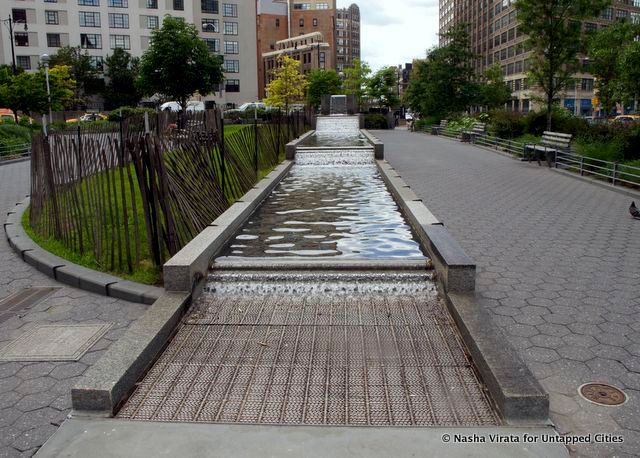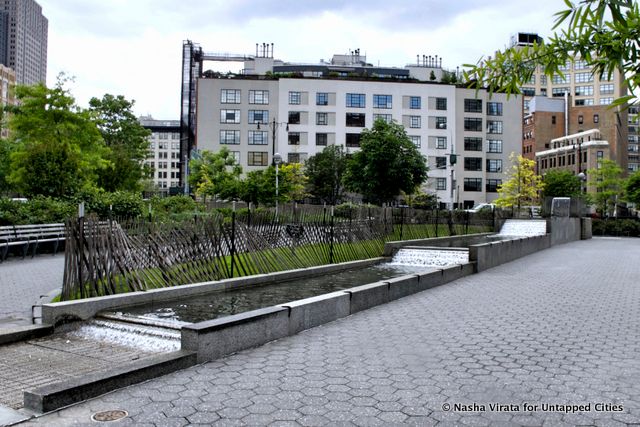Last Chance to Catch NYC's Holiday Notalgia Train
We met the voices of the NYC subway on our nostalgia ride this weekend!


 An entrance at the intersection of Canal and Varick Streets
An entrance at the intersection of Canal and Varick Streets
Yet tucked right in the middle of Canal, Laight and Varick streets, and sandwiched between Chinatown and the Hudson Tunnel, is an oasis of calm and peace (well, for Canal anyway).
Capsouto Park, one of the city’s many pocket parks, opened in 2008, replacing a parking lot that had been there since the 1940s. The park is popular for its ability to both block out the often-frenetic energy of its surroundings, while rooting visitors to the neighborhood around them with the landscaping low enough to offer views of West SoHo, Tribeca and Canal Street itself.

New York City history also inspires the park’s landscape with plaques of old maps and images of the city flanking the entrances. Most striking is the centerpiece of the park, a 114-long sculpture which ties everything together. Consisting mainly of granite and water, Zimmerman’s central sculpture evokes the history of Canal Street and shields visitors from the frequent chaos of the present. Water spills from the 8-foot start of Canal Waterworks and flows through a series of interlocking “steps” before ending near the park’s eastern entrance.

Much like Midtown’s Paley Park, this triangular area uses both greenery and water to create an effective sound barrier. Double rows of canopy and street trees are used to border the park while benches and chess tables are slightly sunken and surrounded by shrubs and perennials. In an effort to eliminate as much darkness as possible, the sculptor and landscape artist Elyn Zimmerman avoided all uses of black when choosing material for the benches, tables and the rest of the park.

The actual use of the park speaks to its’ success. Despite the unappealing location, the park is popular with both adults and children who visit throughout the day to eat lunch, play by the water or sit down and enjoy the surroundings. Tourists who come for the Tribeca Film Festival center often end up at Capsouto Park taking photos of the fountain.

As unlikely as it sounds, we can add a part of Canal Street to the fun map of quiet places. Find our top 5 spots of peace and quiet in the city here.
Subscribe to our newsletter